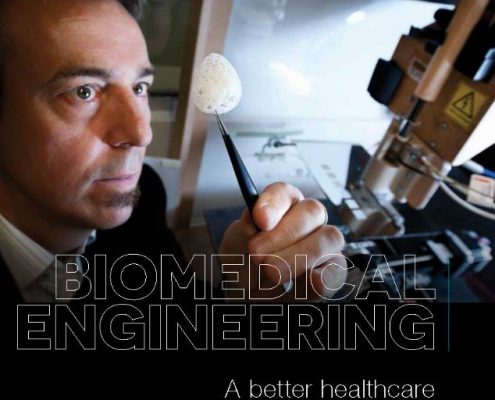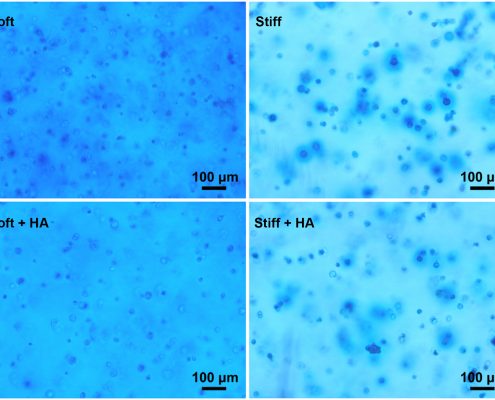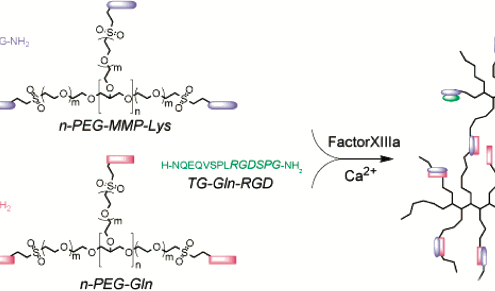
ALL

ARC ITTC Additive Biomanufacturing is featured on newspaper “The Australian”
Channel 7 News about the QUT led breast cancer research using 3D printing technology for tissue engineering.

Ruthenium-mediated crosslinking
Photocrosslinking of acrylate-based hydrogel systems is one of the best and most effective ways to encapsulate cells in hydrogels.

Now that’s radical (…acrylate-based chemistries)
Photocrosslinking of acrylate-based hydrogel systems is one of the best and most effective ways to encapsulate cells in hydrogels.

Michael-Type Crosslinking
Michael-type crosslinking reactions are very mild – neutral pH and ambient temperature – perfect for encapsulating living cells.

Enzymatic crosslinking
Enzymatic crosslinking is the way in which our blood clots during wound healing – cells secrete an enzyme, transglutaminase, which crosslinks fibrin, forming an insoluble protein polymer, or clot. By using this enzyme, along with the appropriate functional groups, hydrogels can be crosslinked in much the same way.

Quo Vadis, Melt Electrospinning?
This blog will aim to discuss guidelines and herein provide recommendations regarding (1) standardised terminology and units, (2) information to be included in describing the capabilities and performance as well as methods used for the commercial electrospinning equipment with a focus on melt electrospinning.

It’s getting hot in here (…thermal crosslinking)
Although it’s instantly recognized from the food industry, gelatine is used in a wide variety of applications – from photography to food to pharmaceuticals to tissue engineering & regenerative medicine.

Ionically crosslinked hydrogels
Some of the earliest hydrogels used for cell encapsulation were, (not ironically) naturally derived, ionically crosslinked materials, such as alginate, chitin and agarose. Although somewhat low-tech, these were a natural place to start.

What are hydrogels?
Most people are familiar with Jell-O or jelly desserts – probably the most widely used and well known hydrogel ever used. Jell-O is made by dissolving gelatin, a protein polymer produced from collagen, in warm water.
Technology

Quo Vadis, Melt Electrospinning?
This blog will aim to discuss guidelines and herein provide recommendations regarding (1) standardised terminology and units, (2) information to be included in describing the capabilities and performance as well as methods used for the commercial electrospinning equipment with a focus on melt electrospinning.
Materials
Clinical Translations

Enquiries
+61 7 3138 6287
info@additivebiomanufacturing.org
Postal address
Institute of Health and Biomedical innovation
Queensland University of Technology
60 Musk Avenue, Kelvin Grove QLD 4059 Australia
[contact-form-7 404 "Not Found"]



